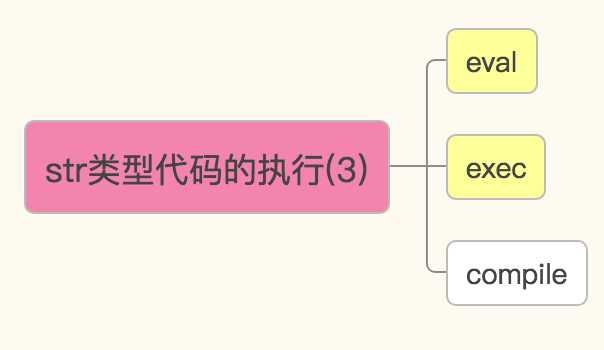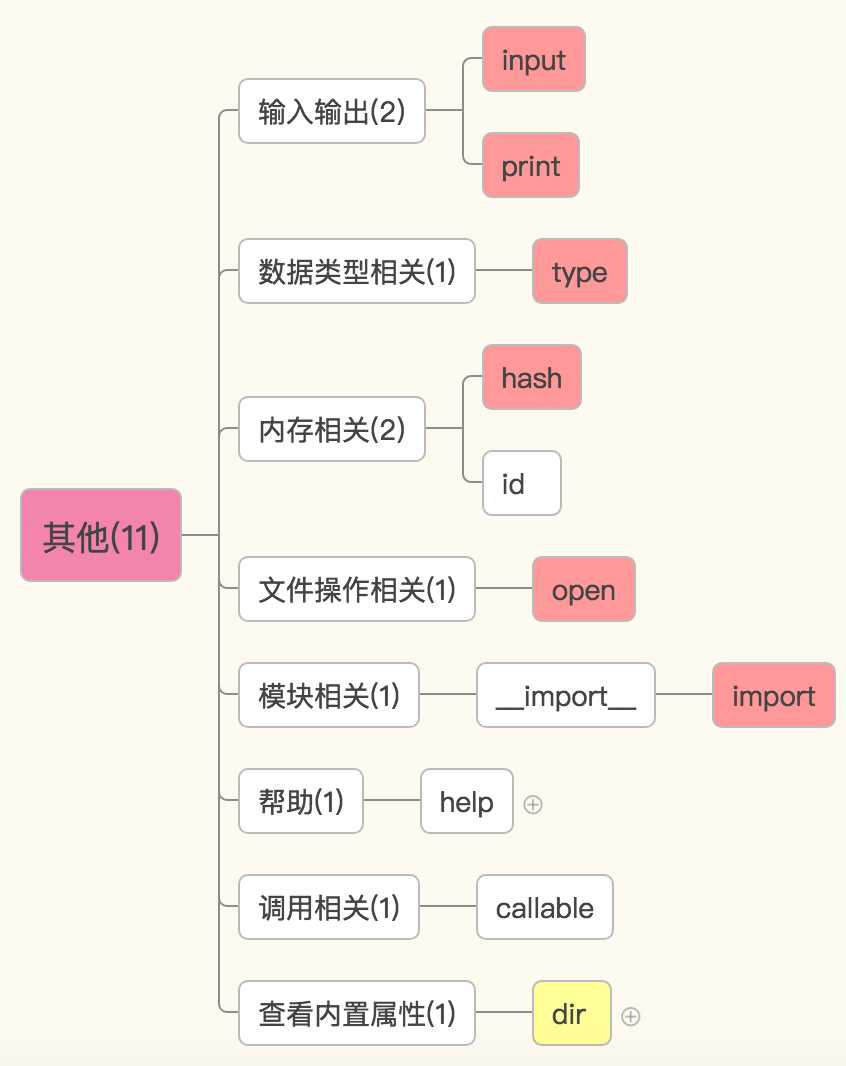what's the python之內置函數
what‘s the 內置函數?
內置函數,內置函數就是python本身定義好的,我們直接拿來就可以用的函數。(python中一共有68中內置函數。)
|
下面我們由作用不同分別進行詳述:(字體加粗的為重點要掌握的)

與作用域相關:global和local

global——獲取全局變量的字典
local——獲取執行本方法所在命名空間內的局部變量的字典
str類型代碼的執行:eval、exec、compile

eval()——將字符串類型的代碼執行並返回結果
exec()——將字符串類型的代碼執行單不返回結果
compile ——將字符串類型的代碼編譯。代碼對象能夠通過exec語句來執行或者eval()進行求值

>>> #流程語句使用exec
>>> code1 = ‘for i in range(0,10): print (i)‘
>>> compile1 = compile(code1,‘‘,‘exec‘)
>>> exec (compile1)
1
3
5
7
9
>>> #簡單求值表達式用eval
>>> code2 = ‘1 + 2 + 3 + 4‘
>>> compile2 = compile(code2,‘‘,‘eval‘)
>>> eval(compile2)
>>> #交互語句用single
>>> code3 = ‘name = input("please input your name:")‘
>>> compile3 = compile(code3,‘‘,‘single‘)
>>> name #執行前name變量不存在
Traceback (most recent call last):
File "<pyshell#29>", line 1, in <module>
name
NameError: name ‘name‘ is not defined
>>> exec(compile3) #執行時顯示交互命令,提示輸入
please input your name:‘pythoner‘
>>> name #執行後name變量有值
"‘pythoner‘"
View Code
與數字相關的:

數字——數據類型相關:bool,int,float,complex
數字——進制轉換相關:bin,oct,hex
數字——數學運算:abs(輸出為數字的絕對值),divmod(使用方法即divmod(數字1,數字2),輸出為(數字1整除數字2後得到的數,余數)),min,max,sum,round(精確的功能),pow(pow的使用方法即pow(數字1,數字2),數字1**數字2,即次方的形式)

print(divmod(7,3))#(2,1)
print(round(3.14159,2))#3.14
f = 4.197937590783291932703479 #-->二進制轉換的問題
print(f)#4.197937590783292
View Code
與數據結構有關:

序列——列表和元組相關的:list和tuple
序列——字符串相關的:str,format,bytes,bytesarry,memoryview,ord(ord與chr互為倒數,不過這不需要掌握),chr(返回表示Unicode代碼點為整數i的字符的字符串。例如,chr(97)返回字符串‘a‘,同時 chr(8364)返回字符串‘€‘),ascii,repr
序列:reversed(用l.reverse,將原列表翻轉並賦值,用list(reversed(l)只是將原列表翻轉看看,不改變原列表的值也就是說不覆蓋),slice(切片的功能)
數據集合——字典和集合:dict,set,frozenset
數據集合:len,sorted(排序功能),enumerate(將一個列表的元素由“索引 值”的形式一一解包出來),all,any,zip,filter(一種過濾的功能),map(一種叠代的功能)

l2 = [1,3,5,-2,-4,-6]
print(sorted(l2,key=abs,reverse=True))#[-6, 5, -4, 3, -2, 1]
print(sorted(l2))#[-6, -4, -2, 1, 3, 5]
print(l2)#[1, 3, 5, -2, -4, -6]
l = [‘a‘,‘b‘]
for i,j in enumerate(l,1):
print(i,j)
#1 a
2 b
L = [1,2,3,4]
def pow2(x):
return x*x
l=map(pow2,L)
print(list(l))
# 結果:
[1, 4, 9, 16]
def is_odd(x):
return x % 2 == 1
l=filter(is_odd, [1, 4, 6, 7, 9, 12, 17])
print(list(l))
# 結果:
[1, 7, 9, 17]
View Code
其他:

輸入輸出:input(),print()
input——與用戶交互用的
print——打印

#print的源碼分析:
def print(self, *args, sep=‘ ‘, end=‘\n‘, file=None): # known special case of print
"""
print(value, ..., sep=‘ ‘, end=‘\n‘, file=sys.stdout, flush=False)
file: 默認是輸出到屏幕,如果設置為文件句柄,輸出到文件
sep: 打印多個值之間的分隔符,默認為空格
end: 每一次打印的結尾,默認為換行符
flush: 立即把內容輸出到流文件,不作緩存
"""
#有關進度條打印的小知識
import time
import sys
for i in range(0,101,2):
time.sleep(0.1)
char_num = i//2 #打印多少個#
per_str = ‘%s%% : %s\n‘ % (i, ‘*‘ * char_num) if i == 100 else ‘\r%s%% : %s‘%(i,‘*‘*char_num)
print(per_str,end=‘‘, file=sys.stdout, flush=True)
復制代碼
View Code
callable——查看參數是否能被調用
def func():pass
print(callable(func)) #參數是函數名,可調用,返回True
print(callable(123)) #參數是數字,不可調用,返回False
dir——可用於查看一個數據類型的內置方法,類似於help,是一種幫助
附:可供參考的有關所有內置函數的文檔https://docs.python.org/3/library/functions.html#object
what's the python之內置函數

